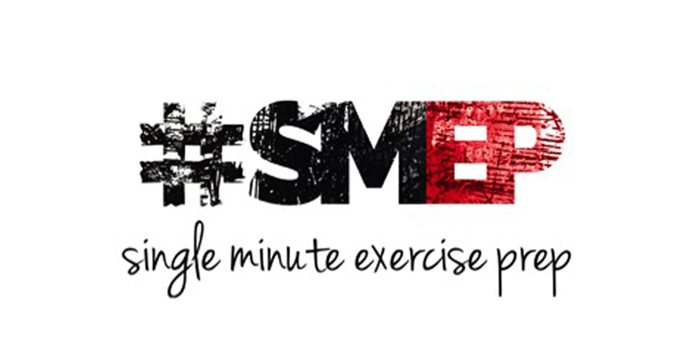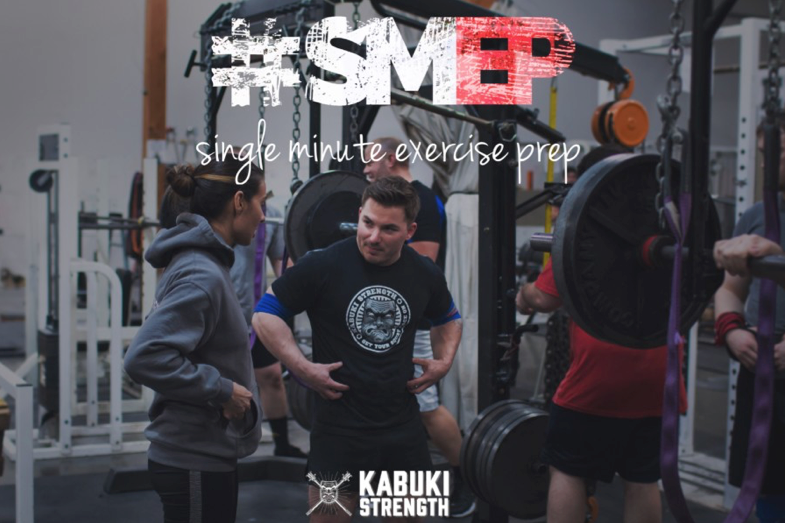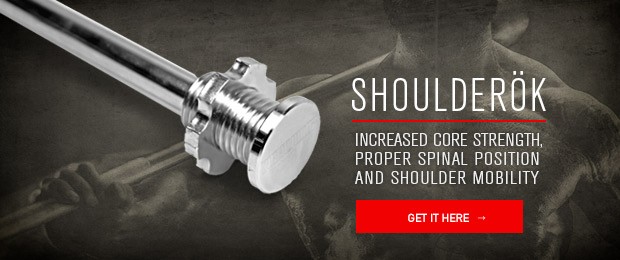
Sometimes I wonder if the world has gone crazy. No, I’m not talking about the political or global mess going on today, just simple things you can see by walking into any strength training facility or even CrossFit gym. In either of these places, you would expect to see some hard ass training going on to either get stronger or get in better shape. But instead, you're likely to encounter another scene. The scene is so ubiquitous that it doesn’t even seem out of place anymore. I challenge you to take a step back and look and you will notice that it looks like a yoga class: people foam rolling and mobilizing. Now keep watching and you will see this is going on for 30-45 minutes and no one will have even touched a weight yet.
About now you're probably thinking to yourself, “Damn Duffin, you are such a hypocrite. Don’t you have an entire website dedicated to movement preparation and sell active mobilization products?” It’s not that I’m saying these things have no value; they are in fact incredibly important and we will go through that in a bit. But it is important to provide some context and structure around this topic. As a person producing content and products around these methods, I feel it even more important that I stand up and address their overuse or misuse.
Simply put, training with a load to improve strength or condition is cumulative. In fact, strength training is the best corrective method there is if, done correctly. I’ve had personal conversations with some of the leading experts in the field of rehabilitation such as Dr. Charlie Weingroff, Dr. Stuart McGill, and Dr. Craig Liebenson, and all have reiterated the value of loaded movement as the best tool when it can be done. First and foremost, one needs to focus on not training with shitty technique. This is usually the primary driver behind requiring that this secondary work be done.
It is not uncommon to see a Supple Leopard book next to someone doing 45 minutes of mobility work before their 30 minutes of training. So I asked Dr. Kelly Starrett his opinion on this topic as well. I'm pretty sure this video reinforces his views that we should "stop this madness and do some training."
I’ve been commended on many occasions for the speed of my healing from disc injuries, muscle tears, and tendon detachments. What many don’t realize is that in those rehab processes I was training three to four times a day, often right at my desk at work. Simple things at first, from goblet squats, Bulgarian split squats, pushups, and whatever was needed based on the recovery plan. Then I moved to loading those movements as soon as I could do so without going into pain.
With all this said, the way we train today is often harder than what our bodies were designed to handle on a consistent regular basis. Some level of preventative or corrective work will need to be incorporated. Here are some general guidelines and approach to employing it effectively:
Evaluate your training and movement.
If you need to do tons of prep or recovery work in excess of nine minutes just to be able to train, you might want to look at your training or your quality of movement. First and foremost, one needs to focus on not training with shitty technique. Shitty technique is usually the reason you require secondary work to begin with. There should not be so many issues remaining from your last workout that you can’t work through them in under nine minutes.
Proper assessment is needed.
You need to be able to get the joints in all the positions to perform the movement cleanly and be able to stabilize in each position. If you are not able to, this is when you need to apply mobilization, soft tissue, or correctives to fix it.
If you want to be prioritized and focused in your efforts, you actually need to know what the issue is. A proper assessment is needed for you to understand what the issues are so you can develop an appropriate plan. This does not necessarily mean you need to seek an outside resource.
I know we have loaded a lot of videos on Kabuki.MS on assessment strategies, and many of the people I work with do the same thing such as MWOD, Acumobility, and FixYourOwnBack. But if you keep beating your head against a wall trying to figure out what is going on, you might want to seek some outside help. You can check our website for KMS certified folks. Another great resources is www.Rehab2Performance.com which will have a good list of clinicians and trainers. I also recommend people certified in DNS, FMS, SFMA, and PRI if you have any of those in your area.
Apply intentionality and purpose.
Once you have identified and fixed the movement and technique used in your training, you should see far fewer issues developing. In fact, if you’re moving well, your warm-ups become your prep work. Let’s sit and think on that concept for a moment. We seem to have lost what a warm-up is in some ways. A large gap that I’ve seen in both warm-ups and with prep work is in regards to both intentionality of the movement and performing it with purpose. A lot of fluff could be cut out if people applied intent and purpose to a few good movements. Or even if they just applied it to their warm-ups.
Don’t just go through the motions! You are doing this work for a reason. Practice perfection and really get after doing things correctly and cuing the patterns you are working on. Apply intent and purpose with a passion to a few key things and you will be far better off. In fact, a lot of injuries I’ve seen in my time as a coach have been propagated from people doing sloppy warm-ups and not focusing on cueing properly because the weight was light.
Prioritize what’s important.
Scope creep is the bane of many lifters' training programs, just as it is in their movement prep or rehab work. You read an article, see a video, or absorb some new awesome content on kabuki.ms or mwod.com. When this happens, remember that not everything can be additive. It may be awesome and it may something you should incorporate, but if you do so, then often it must be implemented as a replacement for something else you were previously doing.
You may have 50 things wrong that need corrected. Don’t focus on fixing the 50 things! Pick the top priorities and address those. Once those are no longer priorities, move to the next. Trying to focus on 50 at once simply doesn’t work and you will not move forward. I would rather make progress on three issues than work on 50 and make no progress at all.
On Kabuki.MS our parameters for implementing our system are as follows:
Training Prep
- 9 minutes or less
- 2-3 movements max
Off Day
- 18 minutes or less
- 3-4 movements max
What is listed above is the maximal amount of work allowed. We often assign far less than this in practice and work on reducing both. The off-day work shown above is FAR above what we typically employ.
These are the rules you need to follow:
- Evaluate your training and movement.
- Proper assessment is needed.
- Apply intentionality and purpose.
- Prioritize what’s important.












I've been doing too much of everything most likley, time to improve!
Thanks!